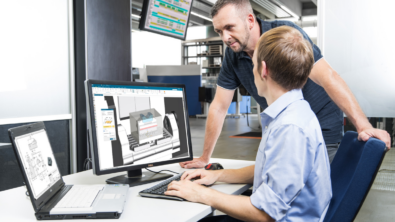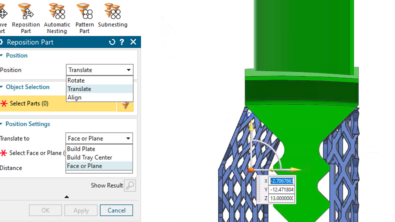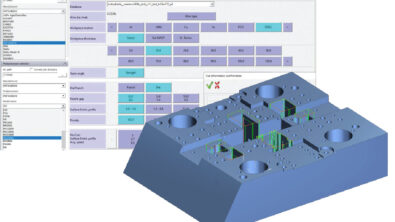Machine Design: A Democratic Approach to Machine Monitoring

As part of Machine Design magazine’s 90th anniversary issue in January, Senior Content Director Bob Vavra asked industry experts to look at the present and future of technology and how it will impact the design and operation of manufacturing over the next decade.
In this article, Machine Design discusses how technologies are driving accelerated change in manufacturing with Tony Hemmelgarn, CEO, Siemens Digital Industries Software.

Here is an excerpt from the article with a focus on CAM.
Vavra: In areas such as AI, machine learning, and IIoT, how quickly do you think these technologies will be adopted in manufacturing?
Hemmelgarn: Machine designers have been using IIoT and smart sensor technology as a way of monitoring the machine operation, but the future belongs to companies that can use that same technology to influence the actual machine operation. The adaptable machine is one that has enough information to be able to adjust its performance.
A brief example would be a machine tool programmed to optimize speed and feed rates based on understanding the workpiece properties and machine loading. CAM programs specify the spindle speed and feed rates based on the materials known to the programmer. We have made some significant advancements in CAM technology to eliminate waste through adaptive milling in our software, so that helps the upfront CAM design. But what if the machine tool had sensors to validate the metrology of the part and could adapt the code based on specific inputs from sensors to maximize the quality and minimize production time?
Fundamentally, those kinds of changes will also enable economic model variations in the way machinery companies interact with their machines over service life. Having the ability to collect operating data, and even code optimization to push continuous improvements to machines in the field will open new business models for companies to provide production-as-a-service. This will provide increased revenue over time than the build-and-replace business model. Then the sensors provide feedback on machine health with a richer set of information, having the ability to adjust performance while simultaneously requesting a specific type of service, such as a bearing replacement.
Moreover, Siemens provides a closed-loop process to the digital twin of either the product being built or the production planning. Therefore, the customer can make informed decisions in confidence, given the ability to validate or modify it virtually.
Read the entire article, “A democratic approach to machine monitoring,” at MachineDesign.com
What’s new in the latest version of NX Manufacturing? Find out in the blog.



